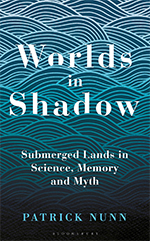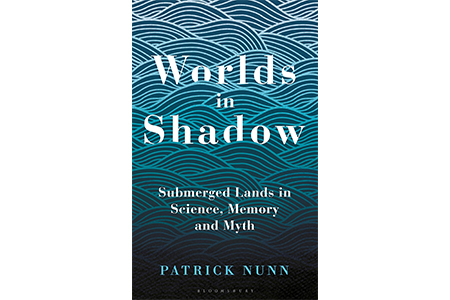 Subtitled “Submerged Lands in Science, Memory, and Myth,” this well-conceived study examines the location of various lost lands on our planet, and the geological mechanisms of their drowning. Sea level rise, isostatic and sediment compaction induced subsidence, volcanism, tectonic slip, and good old fashioned erosion all have roles to play in taking places that were dry land and dunking them forever beneath the waves. In some of these places, humans lived prior to submergence. What did the people who lived there think of the situation? In some cases, durable oral histories preserved evidence of the submerged lands. Nunn presents a particularly compelling example from place names along the coast of Spencer Gulf, Australia, where the Aboriginal language has retained place names for certain stretches of what is today the coast, based on ancient namesakes that now lie six fathoms under. This is an example of “memory.” The particular strength of this volume lies in what Nunn does with other examples that are not quite so clear – with the keen eye of an anthropologist, he examines the mythology of different cultures, and what their cherished stories have to say about flooding and why it happened. There are no shortage of compelling examples to explore here, as you may be aware. In some cases, whole cities have been lost – though not Atlantis (I know you were wondering), which was conjured by Plato to elucidate a political point. All told, it was an enjoyable read. I was really impressed at the breadth of examples that Nunn describes – more than a hundred, I would guess, from the Philippines to the Arctic to the Mississippi Delta and the Amazon. You really feel like you’ve gotten a proper tour of the relevant sites when you close the back cover for the final time. The one stylistic quibble I would offer is that many paragraphs feature “sentences” that are not really full sentences in their grammatical structure. In other words, it’s written the way people often talk. I can take a bit of that when reading — indeed it often makes the writing powerful and punchy — but too much feels a little sloppy. There were a couple scientific factual errors I noticed: for instance at one point (p. 118), Nunn claims the Mediterranean has a low (rather than high) salinity. Elsewhere (p. 121), he repeats the widespread misunderstanding that continental crust sits atop a layer of oceanic crust, but these are not fatal flaws to the overall structure of the book. I enjoyed reading it, and found real power in its tripartite routes of inquiry into a fascinating subject.
Subtitled “Submerged Lands in Science, Memory, and Myth,” this well-conceived study examines the location of various lost lands on our planet, and the geological mechanisms of their drowning. Sea level rise, isostatic and sediment compaction induced subsidence, volcanism, tectonic slip, and good old fashioned erosion all have roles to play in taking places that were dry land and dunking them forever beneath the waves. In some of these places, humans lived prior to submergence. What did the people who lived there think of the situation? In some cases, durable oral histories preserved evidence of the submerged lands. Nunn presents a particularly compelling example from place names along the coast of Spencer Gulf, Australia, where the Aboriginal language has retained place names for certain stretches of what is today the coast, based on ancient namesakes that now lie six fathoms under. This is an example of “memory.” The particular strength of this volume lies in what Nunn does with other examples that are not quite so clear – with the keen eye of an anthropologist, he examines the mythology of different cultures, and what their cherished stories have to say about flooding and why it happened. There are no shortage of compelling examples to explore here, as you may be aware. In some cases, whole cities have been lost – though not Atlantis (I know you were wondering), which was conjured by Plato to elucidate a political point. All told, it was an enjoyable read. I was really impressed at the breadth of examples that Nunn describes – more than a hundred, I would guess, from the Philippines to the Arctic to the Mississippi Delta and the Amazon. You really feel like you’ve gotten a proper tour of the relevant sites when you close the back cover for the final time. The one stylistic quibble I would offer is that many paragraphs feature “sentences” that are not really full sentences in their grammatical structure. In other words, it’s written the way people often talk. I can take a bit of that when reading — indeed it often makes the writing powerful and punchy — but too much feels a little sloppy. There were a couple scientific factual errors I noticed: for instance at one point (p. 118), Nunn claims the Mediterranean has a low (rather than high) salinity. Elsewhere (p. 121), he repeats the widespread misunderstanding that continental crust sits atop a layer of oceanic crust, but these are not fatal flaws to the overall structure of the book. I enjoyed reading it, and found real power in its tripartite routes of inquiry into a fascinating subject.

